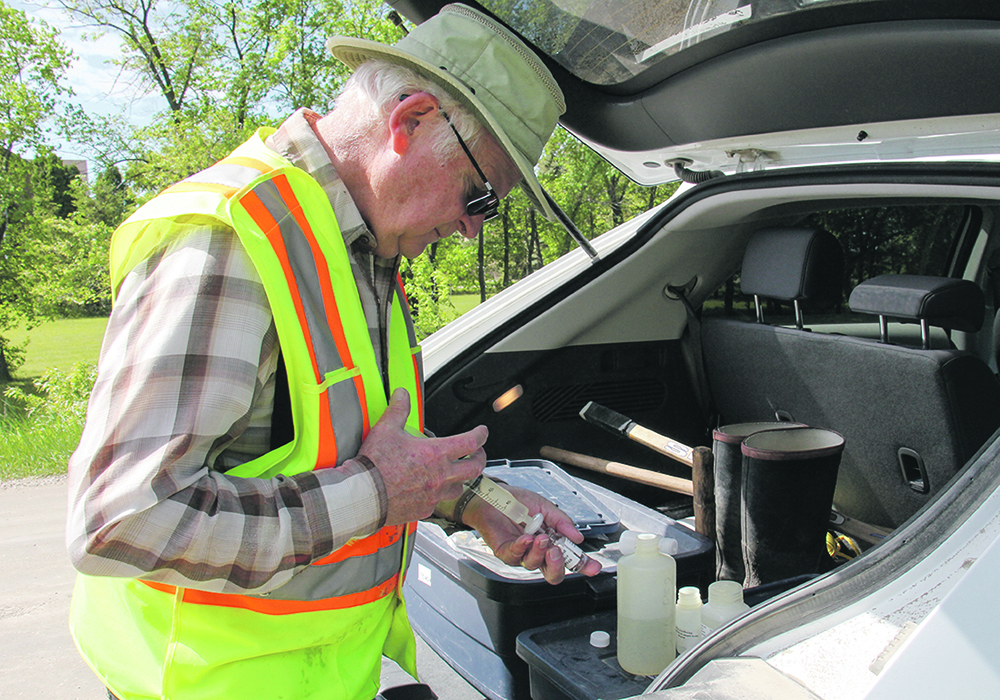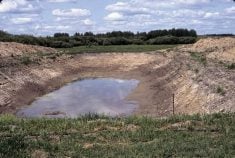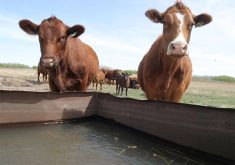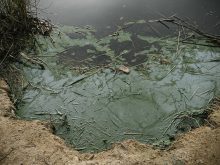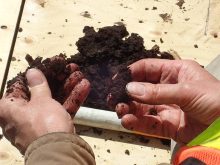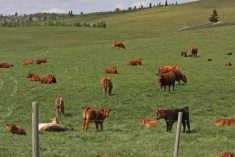An initiative in Manitoba that uses citizen science hopes to help pinpoint sources of excess nutrients in Lake Winnipeg
Glacier FarmMedia – Ken Boese lowers his water sampler over the side of a rural bridge east of Steinbach. The contraption is made of a foot of PVC pipe and a bit of concrete to keep it from floating. A plastic bottle is attached and the whole thing dangles from a length of rope.
Boese scoops up a bottle’s worth of water, swishes it around and dumps it on the ground. This is the rinsing process that precedes the sampling, meant to ensure test results are accurate. He repeats the process, dumps another batch of water, and then dunks the sampler in earnest.
Full bottle in hand, he walks to the back of his electric SUV. He splits the water into three vials: one standard sample, one that’s been strained and one to be tested for salinity. Then he enters notes in an app. More notes go on a pad of paper.
Read Also
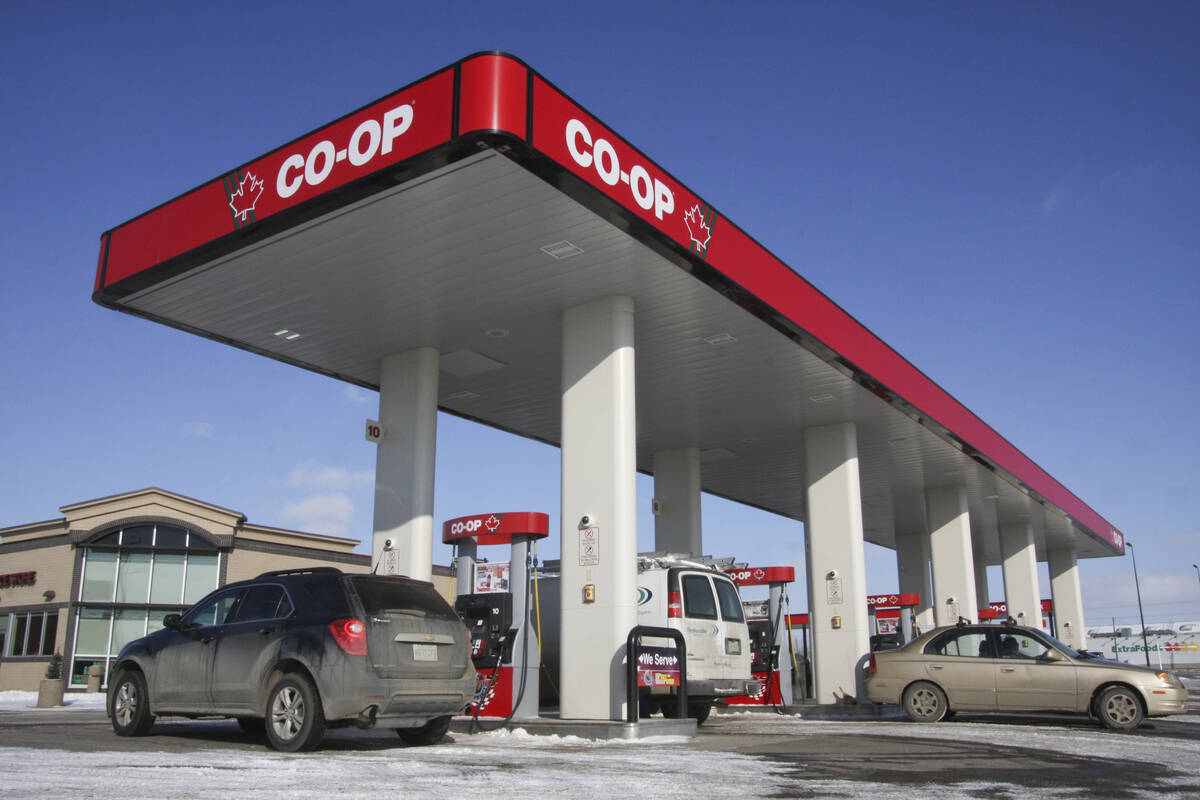
Fuel rebate rule change will affect taxes and AgriStability
The federal government recently announced updates to the fuel rebates that farmers have been receiving since 2019-20.
He doesn’t technically need the physical notes, but he likes to have them just in case.
Boese is methodical about his water sampling, but he never went to school for environmental science. He’s an environmentally conscious retired engineer. He and 54 other citizen scientists make up the Lake Winnipeg Foundation’s community monitoring program. The network, which spans all of southern Manitoba, collects data from 125 sites.
Its aim is to find the source of excess phosphorus that plagues Lake Winnipeg. Once known, the group figures, reduction efforts can be wisely targeted and the health of Lake Winnipeg can be improved.
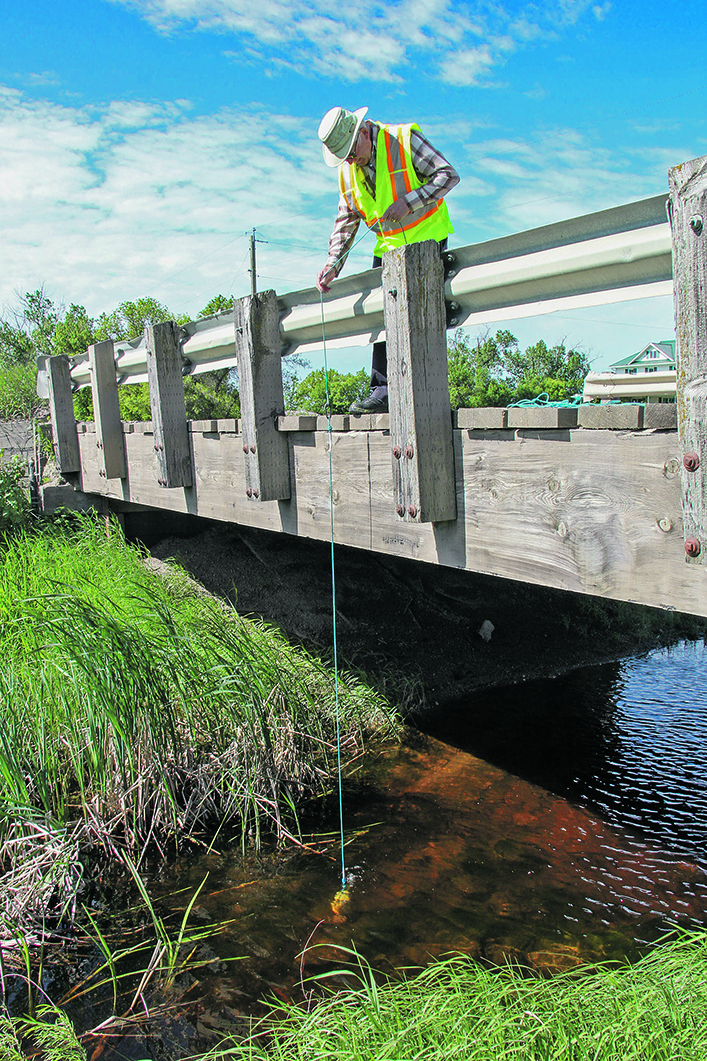
Lake Winnipeg is the world’s 10th largest freshwater lake and the sixth largest lake in Canada. Its watershed spans four provinces and four states.
It also has a well-known and well-publicized nutrient problem. Pictures of beaches blooming with blue-green algae have become repeat features in local headlines. The algal phenomenon is caused by eutrophication, or an overabundance of nutrients, particularly phosphorus.
Provincial reports in 2021 denoted the south basin of the lake as “hypereutrophic” — a term noting rich concentrations of nutrients and minerals in a water body, often associated with higher algae risk.
That area’s long-term average phosphorus concentration is 0.104 milligrams per litre (mg/l), three times higher than the northern end of the lake.
The province puts the target threshold for water phosphorus concentration at 0.05 mg/l.
“These potentially toxic algal blooms have economic, health and environmental implications: they contaminate beaches, reduce water quality, and threaten the communities and industries that depend on the lake,” says The Lake Winnipeg Foundation website.
The government’s most recent state of the lake report, “Lake Winnipeg: Nutrients and Loads Status Report 1994-2021,” says 68 per cent of phosphorus enters the lake via the Red River.
Debate over the root of that phosphorus is heated. Some, including vocal lobby groups and activists, point to agricultural fertilizer and manure.
In 2013, environmental non-profit Global Nature Fund named Lake Winnipeg as its threatened lake of the year and specifically cited agricultural sources of nutrient in the announcement.
Manitoba’s agricultural sector resents the implication, instead pointing to municipal waste-water sources such as the City of Winnipeg’s North End Water Pollution Control Centre. The sector also argues that agriculture cannot be blamed for the entirety of the nutrient load in rivers flowing from hundreds of kilometres away.
Wetland drainage is another cited cause.
Lake Winnipeg Foundation personnel say they are not interested in pointing fingers.
“We say that our network tells us where the phosphorus is coming from, but not what the source of the phosphorus is,” said Alexis Kanu, the foundation’s executive director.
Boese has a roughly monthly routine of collecting samples, starting with the spring thaw. With this year’s rainy spring, he’s been out more often, he said.
At the end of the season in October, the foundation collects all the samples from its citizen scientists and analyzes it for total phosphorus content.
Most sampling sites are near Water Survey of Canada flow rate monitoring sites. This, combined with a season’s worth of phosphorus data, allows the foundation to calculate how much phosphorus is moving through the Lake Winnipeg watershed. It also pinpoints phosphorus “hot spots”, which allows the foundation to advise governments and conservation groups on where their money would be best spent.
“You start with the highest and you work your way down the sources of phosphorus,” Kanu said. “We want to make sure that we have a way of targeting our efforts on where the most opportunity for change is possible.”
Winnipeg is a phosphorus hot spot, she acknowledged, and nutrient from sewage treatment for the city is one focus of the group.
The Seine River watershed in southeast Manitoba — Boese’s sampling grounds — is another site of persistent hot spots. Since sampling began in 2016, high phosphorus readings have appeared every year except for dry years in 2018 and 2021.
The foundation’s 2023-27 strategic plan includes adding more sampling sites to the region in hopes of identifying phosphorus sources, Kanu said. It wants to be as precise as possible. A mitigation strategy for nutrients from manure, for example, is different than for municipal waste water.
The data also indicates possible solutions.
“In a drought year … there’s low phosphorus loading across our network because there was low water,” Kanu said. “Water is the vehicle that carries phosphorus to the lake. If we can mimic drought conditions, if we can keep water on the landscape where its phosphorus can be used to support crops and agriculture, then we can reduce the amount that’s flowing to the lake.”
This means storing water on the land, which the Seine Rat Roseau Watershed District and others are already doing. For instance, the HyLife Laredo water retention project in the RM of La Broquerie holds back 50 acre-feet of water from the Seine River, reducing nutrient load, according to the watershed district’s website.
The foundation is also leaning on governments to implement good policy when it comes to water conservation. It criticized the federal government when, along with recommendations from the International Joint Commission on phosphorus concentration targets, it also accepted recommendations on nitrogen targets.
That decision was made “despite decades of evidence that nitrogen reduction will not reduce algal blooms,” the foundation wrote in a report this spring, adding that a dual-nutrient approach disperses resources and hinders progress.
The foundation uses data from its community monitoring network to back its science-based recommendations.
There’s a spatial correlation between the high concentration of animal agriculture in the southeast and the region’s phosphorus hot spots. Kanu said there’s a need prevent livestock manure from contributing to phosphorus loading in Lake Winnipeg.
But farm groups say Manitoba’s existing regulations are robust and farm practices are already in play to keep nutrients in the soil at point of application.
“Today’s farmer has taken, and is taking, key steps to protect our natural resources while maintaining economic sustainability,” Manitoba Pork Council general manager Cam Dahl said in an op-ed this May.
Farmers are required to file manure management plans with the province, Dahl said. Most hog manure is injected into the soil to prevent surface runoff.
Dahl called on the province to convene a task group of experts from agricultural groups, municipalities and First Nations to “outline science-based measures designed to reduce nutrient flow into the lake” and to break down barriers to adoption of known solutions.
Various projects at different levels of government have sought to address the issue in the past, such as the Lake Winnipeg Basin Program, which funded projects across the basin starting in 2007. Those included new retention ponds, river bank stabilization projects, management practices to keep livestock away from water bodies, wetland restoration and small-scale waste-water treatment investment.
A 2023 update on that program, released by Environment and Climate Change Canada, suggested that, between 2010-23, funded and completed projects had kept 390,445 kilograms of phosphorus from reaching the lake.
The federal government and the province signed a new 10-year agreement on the program in 2021.
Dahl told Glacier FarmMedia that, while groups were convened in the past to address the issue, farming practices and research have advanced. It’s time to renew action and get all stakeholders in the room so they can look at solutions, he said.


